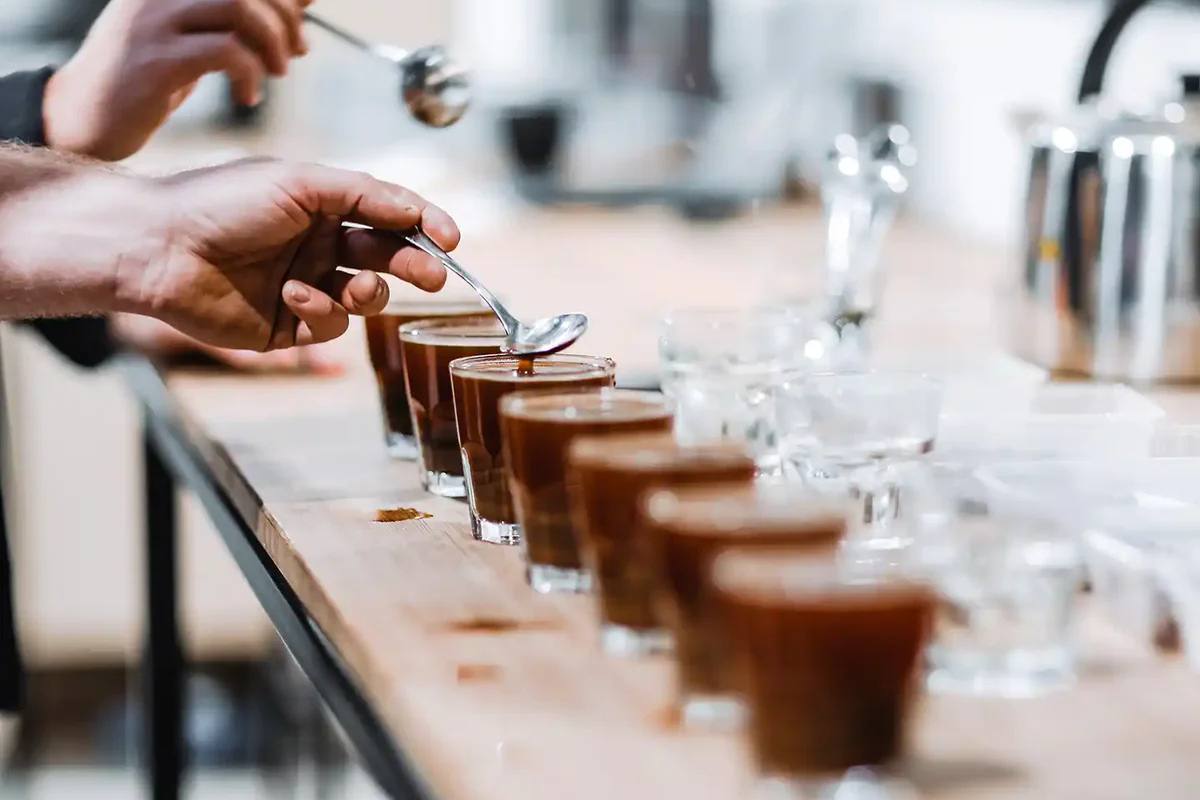For most people, coffee is simply a delicious pick-me-up. But for coffee lovers and professionals, it’s much more — it’s an experience rich in complexity, subtlety, and nuance. The art of coffee tasting allows you to explore a whole world of flavors, aromas, and textures hidden in every cup.
Learning how to taste coffee isn’t just for baristas or experts. Anyone can develop their palate with the right guidance. This guide will teach you how to identify aromas and flavors like a pro.
Why Coffee Tasting Matters
Every coffee bean tells a story — of its origin, variety, processing method, roast level, and brewing style. When you learn the art of coffee tasting, you unlock that story.
Understanding how to identify aromas and flavors in coffee helps you:
- Choose better coffee for your taste.
- Appreciate the craftsmanship behind each cup.
- Distinguish between different origins, roasts, and brewing methods.
- Train your palate to detect subtle notes — from floral to nutty to spicy.
The Coffee Tasting Process: Step-by-Step
1. Start with Freshly Brewed Coffee
Always use fresh beans, freshly ground, and brewed using a clean method like pour-over, French press, or cupping.
2. Observe the Aroma (Smelling)
A huge part of flavor is smell. Before sipping, inhale deeply.
- Dry aroma: Smell the ground coffee before brewing.
- Wet aroma: Smell the coffee right after adding hot water.
Notice scents like:
- Floral (jasmine, rose)
- Fruity (citrus, berries)
- Nutty (almond, hazelnut)
- Chocolate, caramel, spices, earthy notes
3. Tasting (Slurping)
Slurp the coffee quickly to spread it across your palate. This allows you to experience the full range of flavors and aromas.
Focus on:
- Sweetness: Natural sugars, honey, chocolate.
- Acidity: Brightness or tanginess, like citrus or green apple.
- Body: The texture — light (tea-like) or heavy (creamy).
- Bitterness: Subtle or strong, depending on roast and brew.
- Aftertaste: What lingers after swallowing — clean, dry, sweet, or earthy.
4. Note Flavor Characteristics
Use descriptive words. Common coffee flavors include:
- Fruity: Berry, apple, citrus, tropical.
- Floral: Rose, jasmine, lavender.
- Nutty: Almond, peanut, hazelnut.
- Spicy: Cinnamon, clove, cardamom.
- Sweet: Chocolate, caramel, honey, sugar cane.
- Earthy/Woody: Tobacco, cedar, mushroom.
- Herbal: Mint, basil.
The Coffee Taster’s Flavor Wheel
Professionals use the Coffee Taster’s Flavor Wheel, a visual tool with categories of aromas and flavors. It’s a fantastic guide to help you put names to what you’re tasting.
Tip: Keep a copy handy when tasting different coffees — it helps train your brain to identify notes.
Factors That Influence Flavor
- Origin: Ethiopian coffees are often floral and citrusy; Colombian coffees are balanced and sweet.
- Variety: Arabica tends to be more delicate and complex; Robusta is bolder and earthier.
- Processing:
- Washed: Clean, bright, citrusy.
- Natural: Fruity, heavy-bodied.
- Honey: Balanced, sweet, syrupy.
- Roast Level:
- Light: Highlights origin flavors, acidity, and floral notes.
- Medium: Balances acidity and sweetness.
- Dark: More bitter, smoky, chocolate, less origin clarity.
- Brew Method: Affects extraction of flavors and mouthfeel.
How to Practice Coffee Tasting at Home
- Taste multiple coffees side by side (called cupping).
- Focus on one element at a time: aroma, acidity, sweetness, body.
- Keep a tasting journal. Note the flavors you detect.
- Taste coffee at different temperatures — flavors change as it cools.
- Use simple descriptors at first — fruity, sweet, bright, bold.
Common Mistakes to Avoid
- Tasting with a flavored palate — avoid gum, mint, or strong spices beforehand.
- Rushing the process — take your time to observe and savor.
- Comparing different roast levels without adjusting expectations.
Ready to Taste Coffee Like a Pro?
Mastering the art of coffee tasting transforms coffee from a daily habit into a sensory journey. Whether you love light, floral brews or bold, chocolatey blends, knowing how to identify aromas and flavors deepens your appreciation.
So, grab your favorite beans, brew carefully, take a deep breath, and savor each sip. Your next cup might surprise you with flavors you never noticed before!
